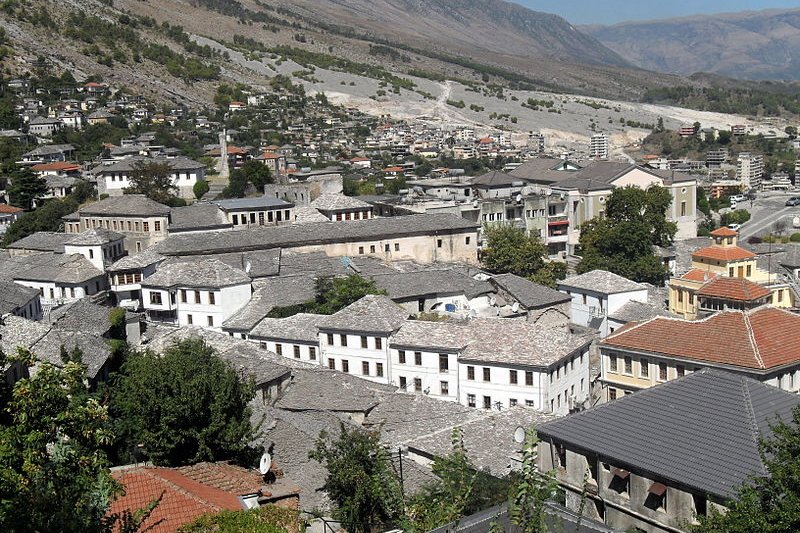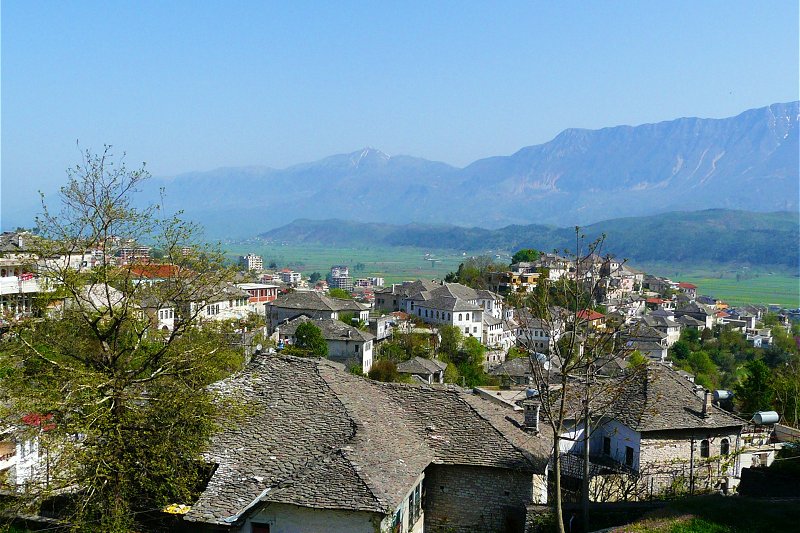 Gjirokastër, Albania
Gjirokastër, AlbaniaSource: https://commons.wikimedia.org/wiki/File:Gjirokaster,_view_from_street_to_castle_1.jpg
Author: Krzysztof Dudzik

Gjirokastër is a city in the historical Epirus region, in the southern part of Albania. Located at an elevation of 300 m (984 ft), it has a population of 43,000 (2011 estimate). The old quarters of Gjirokastër is today a World Heritage Site, inscribed as the Historic Centres of Berat and Gjirokastra. It is an excellent example of a well-preserved Ottoman town. The town observes the Central European Time, which is an hour ahead of Coordinated Universal Time (UTC+1), and two hours ahead during Daylight Saving Time in summer.
The city of Gjirokastër has been settled as early as the Iron Age. Greek tribes were the earliest settlers in the area. The city walls dating from the 3rd century AD are still standing today. Between the 6th to the 12th century, Gjirokastër developed into a major commercial center. It was known as that time as Argyropolis.
Gjirokastër was part of the Byzantine Empire until 1417, when it became part of the Ottoman Empire. Under the Ottomans, there was still a Christian neighborhood with Gjirokastër which existed even into the 17th century.
In the 19th century, Gjirokastër became the center of an Albanian National Awakening. During the First Balkan War of 1912-13, it was captured by Greece following the retreat by the Ottomans. However the city was given to Albania under the Treaty of London of 1913.
 The scenic view in Gjirokastër
The scenic view in GjirokastërSource: https://commons.wikimedia.org/wiki/File:Gjirokast%C3%ABr_004.jpg
Author: Ksenija Putilin

During the Second World War, it was first occupied by Italians, followed by the Greek Army, and finally by the Germans. After the war, the city became an industrial center under Communist rule. Being the birthplace of Communist leader Enver Hoxha, the city was elevated to the status of museum town. The end of communist rule brought severe economic hardship to Gjirokastër. The people also suffered from the collapse of a pyramid scheme which affected most of its population in 1997.
Visiting Gjirokastër
You can take a bus or minibus (called furgon) from Tirana to Gjirokastër. The bus station is located at the entrance to the town. There are buses every hour from Tirana. The fare is 1000 Leke.Places of Interest in Gjirokastër
- Ethnographic Museum
- Gjirokastër Castle
- Old Bazaar
- Zekate House
 Latest updates on Penang Travel Tips
Latest updates on Penang Travel Tips

Copyright © 2003-2025 Timothy Tye. All Rights Reserved.

 Go Back
Go Back